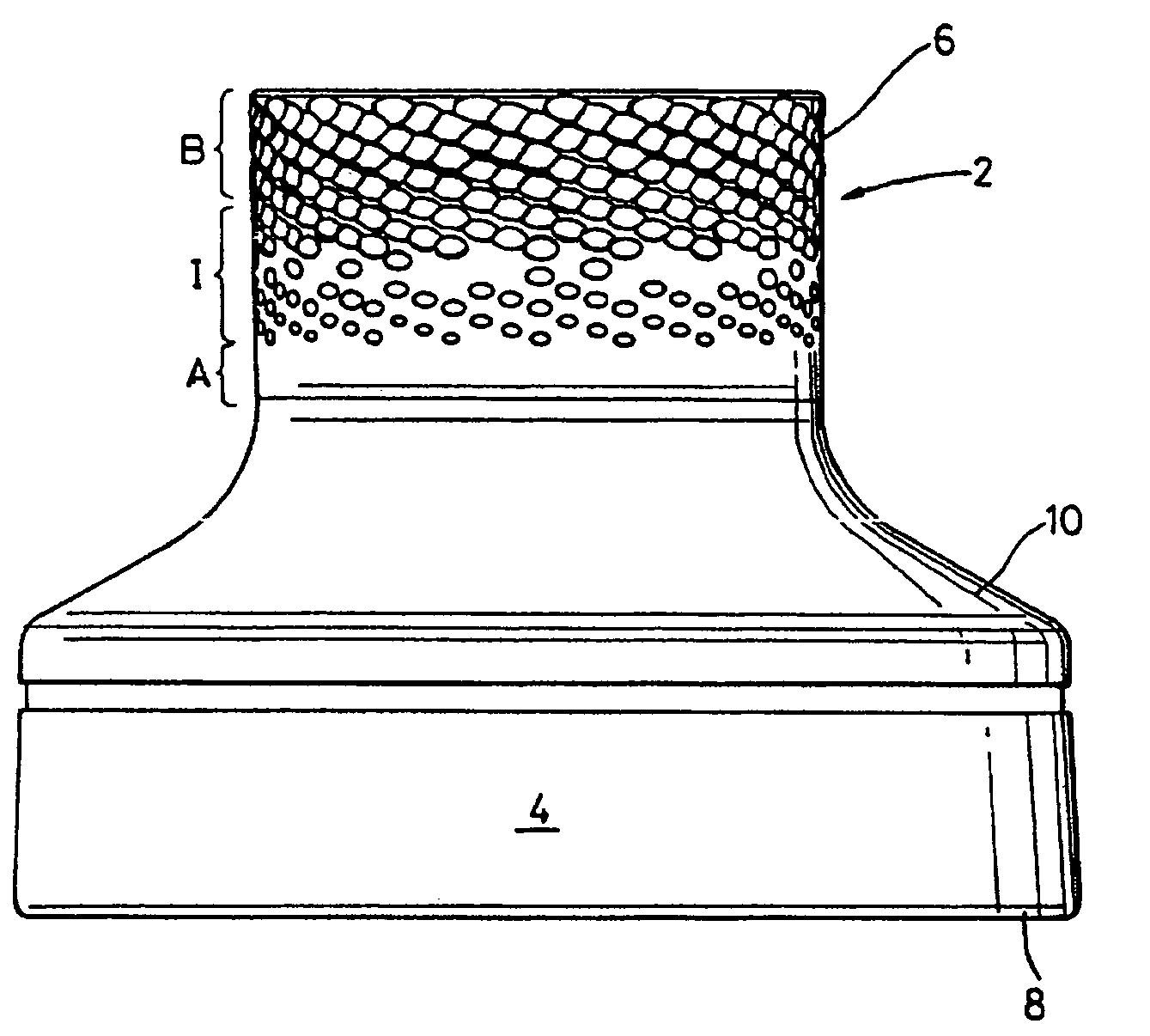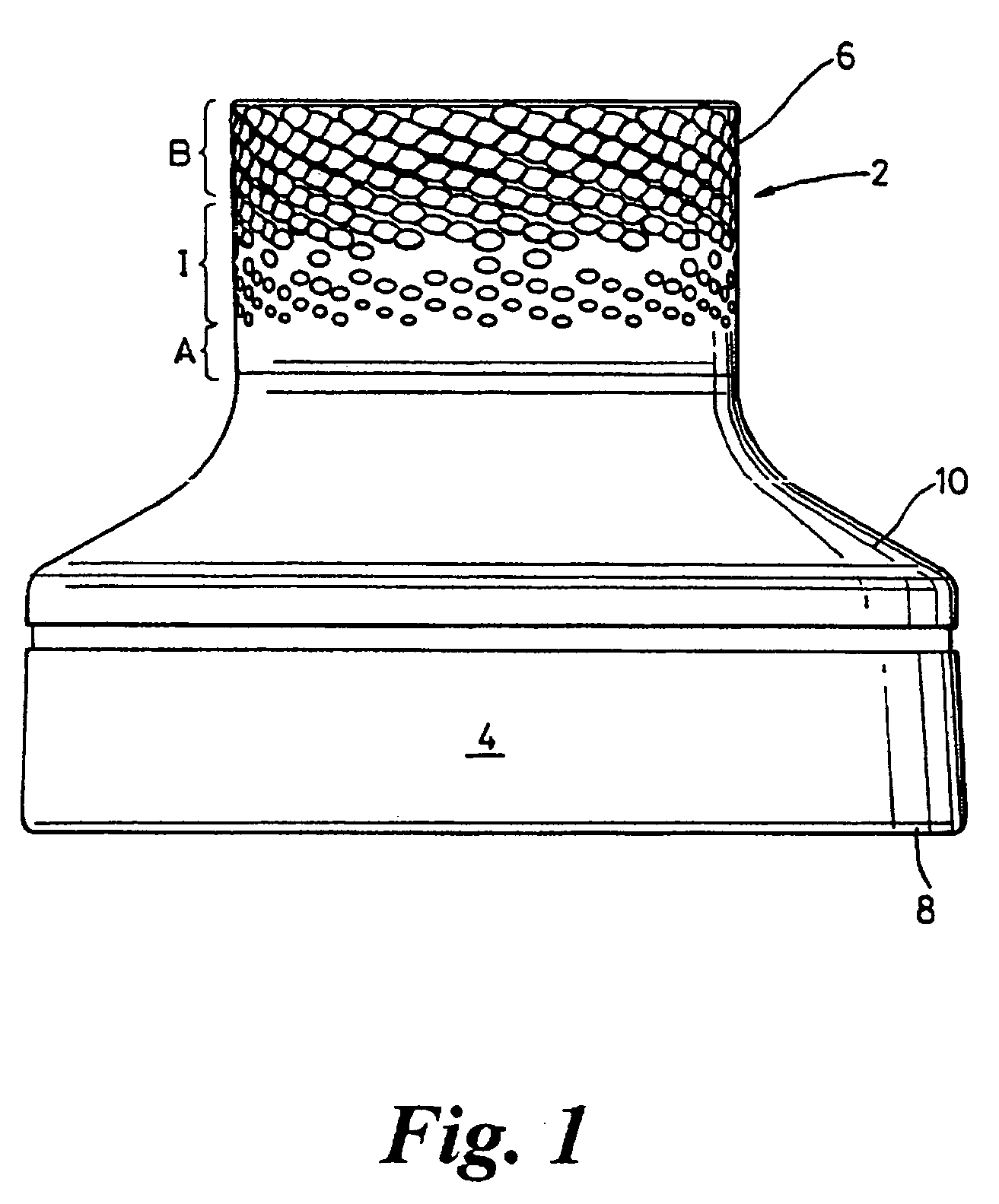Winch and winch drum
a winch and winch technology, applied in the field of winches and winch drums, can solve the problems of prone to variations, random arrangement of relatively, and premature rope wear, and achieve the effect of reducing rope and preventing snagging of rope on corners
- Summary
- Abstract
- Description
- Claims
- Application Information
AI Technical Summary
Benefits of technology
Problems solved by technology
Method used
Image
Examples
Embodiment Construction
[0041]FIG. 1 shows a winch drum 2 for rotatable mounting on a winch (not shown), the winch drum having a skirt 4 and a rope-gripping surface 6 positioned axially above a lower lip 10. In use, assembled on a winch, an upper lip part of the winch would be positioned axially above the winch drum. The rope-gripping surface is essentially cylindrical, of modified circular cross- section.
[0042] In use, a winch incorporating the winch drum 2 is secured by its base to a surface such as the deck of a yacht with the axis of rotation of the drum perpendicular to the surface, and a rope is wound around the rope- gripping surface, in single or (preferably) multiple loops, the lips preventing the rope from riding axially off the surface 6. Drive to rotate the drum can be applied from the head of the winch (not shown), or from below the deck in a known manner.
[0043] The surface 6 of the upper portion of the drum has a finish which is shown in more detail in FIG. 2. The surface finish comprises h...
PUM
 Login to View More
Login to View More Abstract
Description
Claims
Application Information
 Login to View More
Login to View More - R&D
- Intellectual Property
- Life Sciences
- Materials
- Tech Scout
- Unparalleled Data Quality
- Higher Quality Content
- 60% Fewer Hallucinations
Browse by: Latest US Patents, China's latest patents, Technical Efficacy Thesaurus, Application Domain, Technology Topic, Popular Technical Reports.
© 2025 PatSnap. All rights reserved.Legal|Privacy policy|Modern Slavery Act Transparency Statement|Sitemap|About US| Contact US: help@patsnap.com



